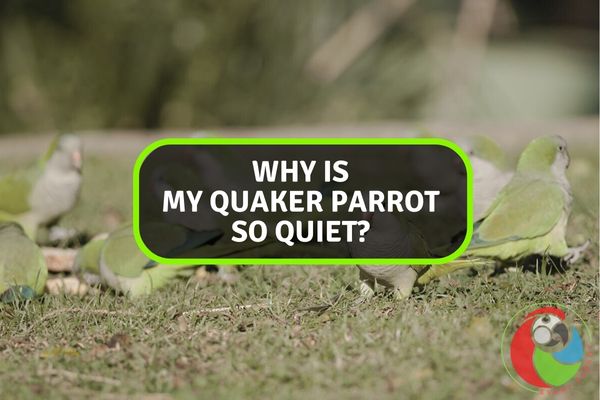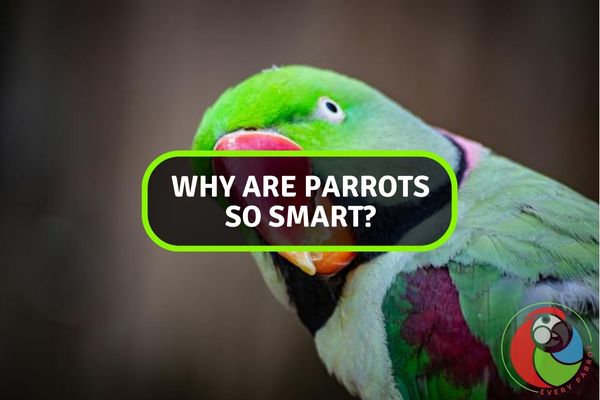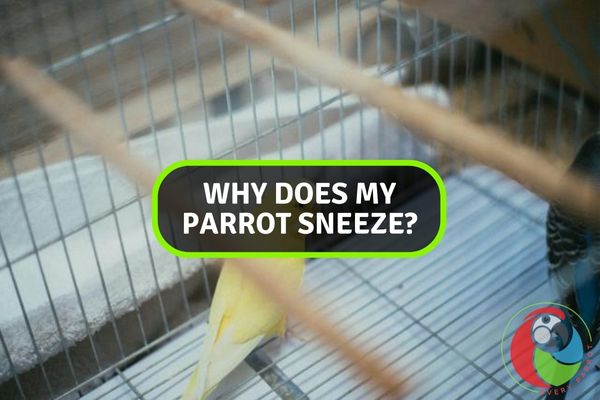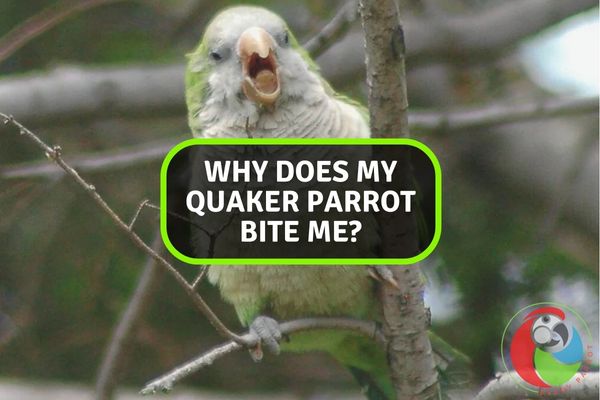Why is My Parrot So Aggressive?
Ever found yourself pondering, “Why is my parrot suddenly so aggressive?” Fret not, fellow feathered friend enthusiast! Understanding the root of your parrot’s newfound feistiness is crucial for fostering a harmonious relationship. These vibrant creatures, with their colorful plumage and animated personalities, may exhibit aggression due to an array of factors – be it hormonal changes, territorial instincts, or even unmet social needs.
As we delve into the fascinating world of feathered companionship, let’s decipher the signals your parrot is sending. Buckle up for a feathered journey where we unravel the mystery behind those beak clicks and squawks, and discover the keys to restoring peace in your avian abode. Get ready to decode the language of aggression in our fine-feathered friends!

Unraveling the Causes of Parrot Aggression
Parrots can be aggressive for many reasons. Let’s uncover some facts:
Biological Factors
1. Hormonal Influences
Hormonal changes associated with breeding season or molting can trigger aggressive tendencies in parrots. Spikes in testosterone levels often cause male parrots to be more territorial. Meanwhile, low estrogen levels in female parrots during non-breeding times may also increase aggressiveness. These hormonal influences often subside once the breeding season or molting period ends.
2. Genetic Predispositions
Some parrot species have a greater natural tendency toward aggressive displays due to their wild temperament. Macaws, cockatoos, and Amazons are breeds that may be more prone to aggression issues based on inherited traits. However, any parrot can become aggressive regardless of its natural disposition if stressed or mishandled.
Environmental Triggers
1. Cage Size and Setup
An enclosure that is too small or crowded can cause parrots to be territorial and lash out at owners when they approach the cage. Insufficient toys and perches also lead to boredom and frustration.
2. Presence of Other Pets
Seeing other animals like dogs or cats can overstimulate a parrot’s naturally protective instincts. Some parrots become aggressive in safeguarding their territory or resources.
3. Noise and Environmental Stressors
Loud music, TV sounds, or chaotic households stress parrots out, making them more irritable and prone to biting or lunging. Sudden changes to the environment or schedule can also trigger aggressive reactions.
Recognizing Different Forms of Parrot Aggression
Understanding parrot aggression involves recognizing various forms, from territorial displays to fear-based reactions. Identifying cues like body language and vocalizations is key to fostering a harmonious bond with your feathered companion.
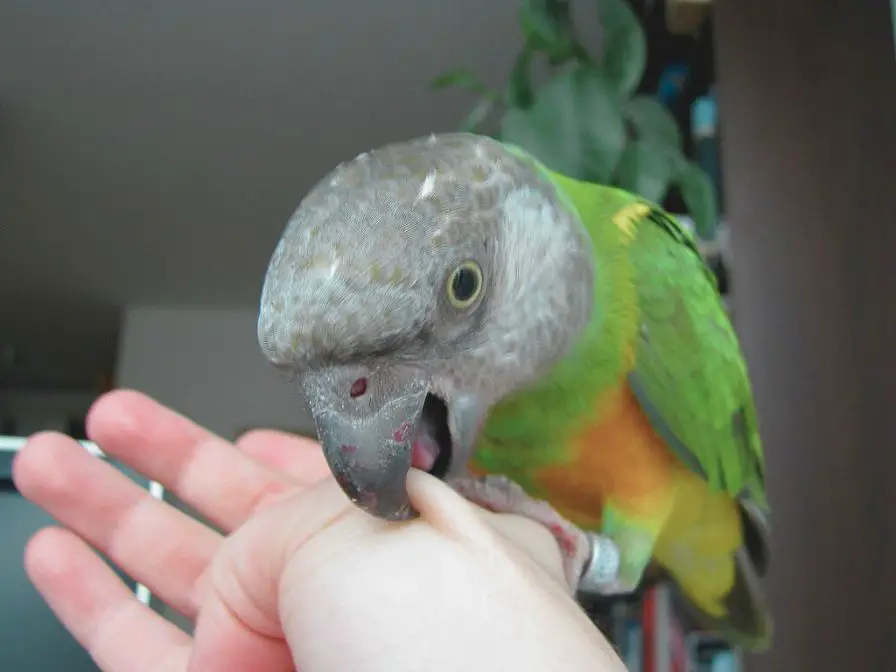
Territorial Aggression
1. Signs and Symptoms
Territorial parrots will lunge, bite, or screech when owners try to reach into the cage or touch favored perches/toys. They fiercely guard their enclosure and may even throw food or objects.
2. Common Triggers
Invading a parrot’s perceived territory by moving cages or touching protected areas often elicits a territorial response. Overcrowding cages, insufficient playtime outside the cage, or removing favored items can also spark territorial behavior.
Fear-Based Aggression
1. Identifying Fearful Behavior
Fearful parrots may try to escape or hide when approached. Dilated pupils, raised feathers, and hesitant body language signal anxiety. Defensive biting or aggressive displays occur due to fear instead of true aggression.
2. Addressing Sources of Fear
New or frightening stimuli like house guests, children, or loud noises can make parrots react aggressively out of fear. Slow introductions paired with positive reinforcement helps parrots to overcome fearful tendencies.
Protective Aggression
1. Understanding the Protective Instinct
Parrots are highly social and form tight bonds with owners, leading them to be protective. They often behave aggressively to safeguard their owners, cages, or food from perceived threats.
2. Managing Protective Behavior
Channel protective energy into positive activities like training. Discourage biting and screaming when owners approach and reward calm behavior. Show parrots when new people or pets pose no real danger.
Behavioral Analysis and Observation
Carefully observing body language, vocalizations, and baseline interactions provides insight into parrot behavior. This helps identify early warning signs of aggression.
Establishing a Baseline for Normal Behavior
Learn what a parrot’s regular demeanor and activities look like when relaxed. This baseline makes it easier to detect when problematic behaviors deviate from normal.
Documenting Patterns and Triggers
Take notes on when aggression occurs and potential causes like a new toy, stranger’s visit, or cage cleaning. Look for patterns to better understand triggers.
Seeking Professional Help When Needed
For serious or dangerous aggression issues, consult an avian veterinarian and parrot behaviorist. They can provide specialized guidance and training approaches.
Positive Reinforcement Training Techniques
Positive reinforcement training relies on rewarding desired behaviors and ignoring unwanted behaviors. It builds trust between parrots and their owners.
Building Trust and Bonding with Your Parrot
Spend quality time interacting with parrots daily through talking, training, and preening. Build confidence by being patient and letting parrots progress at their own pace.
Step-by-Step Guide to Positive Reinforcement Training
- Identify a cue – a verbal command or hand signal. Start with a simple cue like “step up.”
- Give the cue immediately before offering a reward. Popular rewards include treats, head scratches, and praise.
- Reward every time the parrot correctly responds to the cue at first. Then provide rewards intermittently as the response becomes reliable.
- Use a clicker or bridge word like “good” to precisely mark correct behaviors.
- Practice short, engaging sessions multiple times per day. End sessions on a positive note.
Environmental Enrichment for Aggressive Parrots
To curb aggression in parrots, providing environmental enrichment is key. Offer diverse toys, perches, and activities to engage their curious minds, promoting mental stimulation and a healthier, happier feathered friend.
Creating a Stimulating and Safe Environment
Provide sturdy wood perches, swings, branches, and toys for exercise. Include sheltered areas for retreat but maximize visibility.
Interactive Toys and Activities
Rotate shred-able toys, foraging puzzles with treats, bell toys, and shaking/rolling toys to prevent boredom. Offer foot toys for mental stimulation.
Providing Mental and Physical Stimulation
Allow supervised out-of-cage time for flying and climbing daily. Practice training sessions and novel challenges like recognizing shapes/colors.
Rotating Toys and Environmental Changes
Swap out toys weekly and rearrange cage layouts periodically. This prevents territoriality and encourages exploration.
Nutrition and its Impact on Parrot Behavior
Balanced nutrition reduces aggression caused by nutritional deficiencies. Sufficient protein, fruits/veggies, and omega fatty acids improve mood.
Recommended Diets for Parrot Health
Feed a variety of pellets, seeds, whole grains, nuts, fruits, and vegetables. Avoid excess sugar and fat, which causes Vitamin A deficiency.
Role of Supplements in Reducing Aggression
Calcium and Vitamin D3 support hormone regulation. Probiotics improve gut health to reduce irritability. Always consult an avian vet first.
Consultation with Avian Veterinarians for Dietary Advice
Schedule wellness exams for nutritional recommendations tailored to your parrot’s needs and any behavior issues. Vets can diagnose deficiencies.
Conclusion
Understanding the root causes of your parrot’s aggression is pivotal for fostering a harmonious relationship. Factors like fear, territorial instincts, or health issues may contribute to their behavior. Patience, positive reinforcement, and creating a secure environment can mitigate aggression. Consulting a vet and seeking professional advice ensures your feathered friend’s well-being.
Remember, building trust is a gradual process, and with love and care, your parrot can transform into a joyful and affectionate companion.



